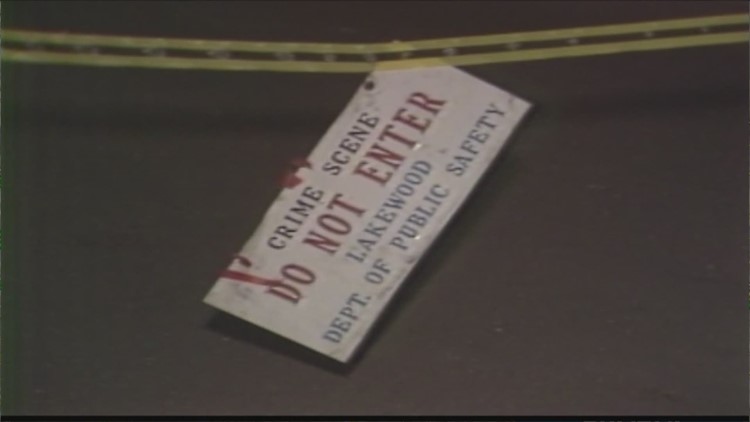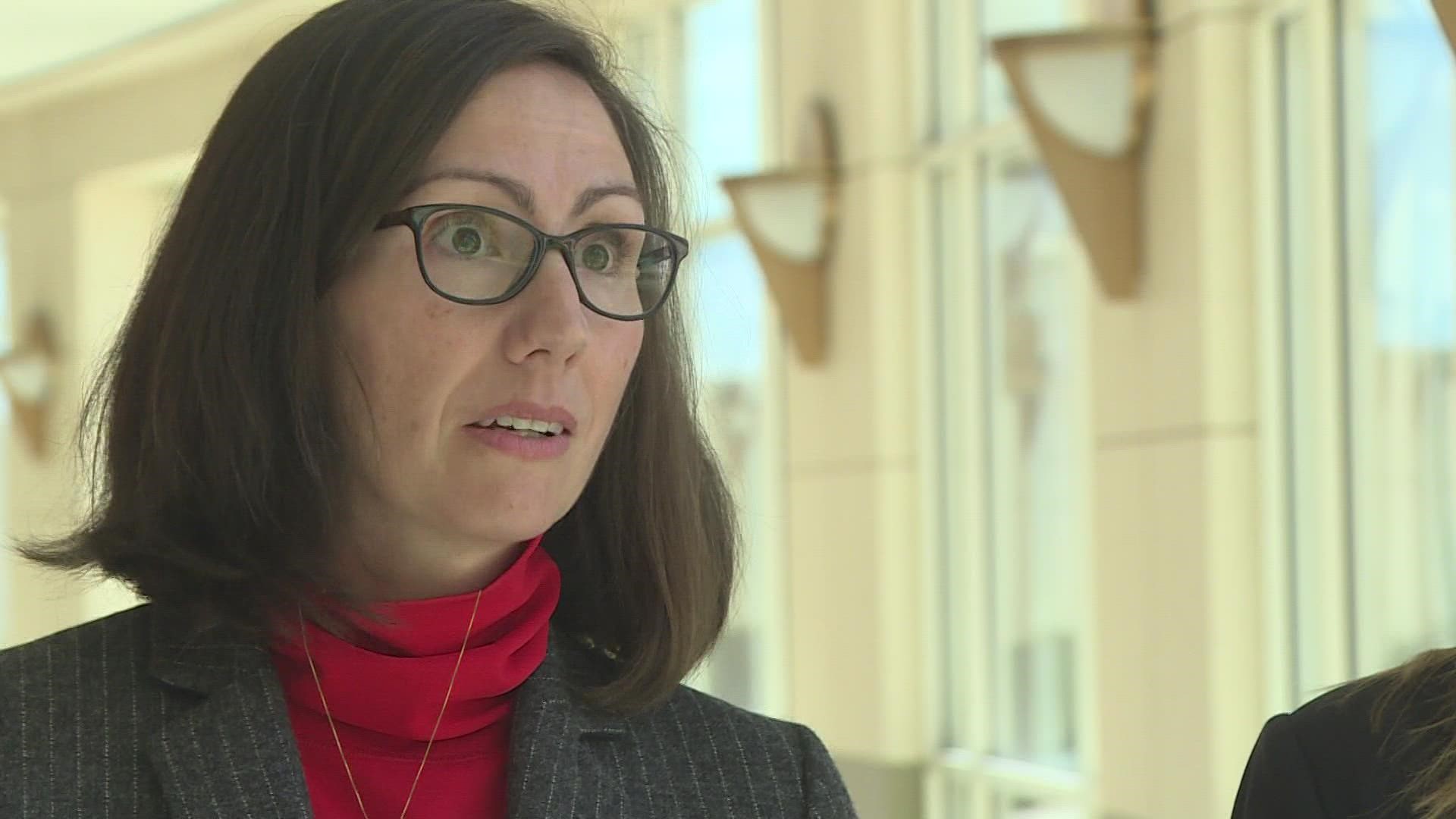LAKEWOOD, Colo. — Connie Bennett sat up straight on the witness stand Thursday afternoon, recalling the worst day of her life – the Monday in January 1984 when she discovered the bloody crime scene where her son, daughter-in-law and granddaughter were murdered.
Bennett had gotten a call that morning because her son, Bruce, and his wife, Debra, had not shown up for work at the family furniture business.
Bennett described driving to the home her son and his family had moved into six weeks earlier, located in the 16300 block of East Center Drive in Aurora.
“When I got there, I saw that the garage door was open,” Bennett testified. “I saw both of their vehicles sitting there, and so I got out of my vehicle and when I went up toward the garage door, I looked to the right and I saw what looked like Debra’s purse scattered. … then I became very concerned.”
Bennett was the third witness called in the trial of Alex Ewing in Jefferson County. Ewing, 61, faces first-degree murder charges in the killing of Patricia Smith in Lakewood six days before the Bennett murders.
An Arapahoe County jury convicted Ewing last summer of killing Bruce and Debra Bennett and their 7-year-old daughter, Melissa.
District Judge Tamara Russell, who is overseeing the Smith case, ruled that prosecutors could tell the jury about the Bennett murders for the limited purpose of “identity, common plan or modus operandi.” In her opening statement, prosecutor Katharine Decker stressed the similarities in the two cases: Smith was beaten with a hammer, and it’s believed a hammer was used in the attack on the Bennetts; Smith was sexually assaulted and left on her back, partially nude, with her legs spread apart, as was Melissa Bennett, who was also raped. In both cases, the killer is believed to have entered through an open garage door.
A DNA hit in 2018 linked Ewing to semen found at both crime scenes.
Bennett, now 88, entered the courtroom just after 1:20 p.m. Thursday, stopping to clasp hands with Chery Lettin, Smith’s daughter.
As she testified, Bennett described what she found when she pushed open the door leading from the garage into the first floor of the multi-level home. After stepping inside, she saw her son on the floor near the bottom of a staircase.
“I approached my son,” she said, pausing to fight her emotions. “… My son lying on the floor – so I approached him – and I fell to my knees. He was lying on his back. I said, ‘Bruce, what happened?’
“I could see that he was dead. He had very serious injuries to his forehead, and there was a lot of blood … I could see that he was gone.”
DNA is at the center of both the prosecution’s case and the defense’s.
Defense attorney Katherine Spengler told jurors in her opening statement that recent DNA testing on the hammer used to kill Smith – as well as on her clothing, boots, purse, and wallet – all yielded DNA profiles that are not Ewing’s.
Much of Thursday’s testimony was focused on evidence in the case.
Gary Klepper, at the time a crime scene technician for the Lakewood Police Department, testified that he photographed and collected more than 100 pieces of evidence in Smith’s home, including the carpeting from beneath her body. He described the process of marking each item, sealing it in a bag and transferring it to the police department’s evidence locker.
Klepper described wearing gloves throughout the process, removing them only when he was taking photographs.
Spengler, the defense attorney, elicited testimony that fit with the defense’s argument – that the lack of Ewing’s DNA on the hammer used to kill Smith and on some of her clothing points to someone else as the killer, and that evidence was mishandled.
For example, under her questioning Klepper said that Smith’s jeans appeared to have been “forcibly removed” by the killer. Ewing’s DNA was not on those jeans. The DNA that was found on them remains unidentified.
Prosecutors have already asserted that there’s a simple explanation: The killer wore gloves.
Ewing faces four counts of first-degree murder. One alleges he killed Smith after deliberation. Each of the other three counts alleges that he killed Smith while in the commission of another felony – burglary, robbery or sexual assault.
The trial is expected to last two weeks or longer.
RELATED: Man accused of 1984 hammer killing goes on trial in case where both sides stress DNA evidence
Contact 9Wants to Know investigator Kevin Vaughan with tips about this or any story: kevin.vaughan@9news.com or 303-871-1862.
SUGGESTED VIDEOS: Investigations from 9Wants to Know



